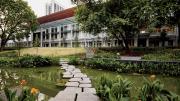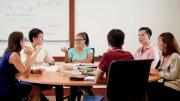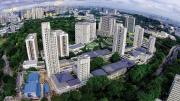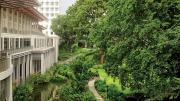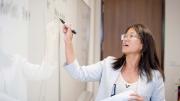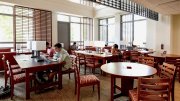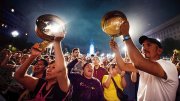“What to teach and how to teach it are likely to become central issues for colleges in a way that they haven’t been for a long time,” wrote Nicholas Lemann ’76 in early 2016 in The Chronicle of Higher Education. Past experience as dean of Columbia’s Graduate School of Journalism, where he revised the curriculum, steeped Lemann in professional schools’ natural focus on best equipping students for their chosen careers. For teachers of “the great majority” of U.S. undergraduates who “are taking mainly skills courses” to become accountants, engineers, K-12 educators, and so on, the academic issues are largely professional, too. But “In the better-resourced, more-selective colleges that a lucky minority of students attend”—liberal-arts institutions—“the curriculum is usually both less practical and less prescribed,” Lemann noted. He knows about such matters as an alumnus, and as a member of the Harvard College visiting committee and the American Academy of Arts and Sciences’ Commission on the Future of Undergraduate Education.
Until now, he continued, “most selective institutions…that emphasize an undergraduate liberal-arts education have gotten themselves off the hook of having to…decide what all degree recipients must have learned.” Today, he observed, “If colleges can’t or don’t want to clearly define what they’re about academically, they are left unarmed against what has become the intense pressure to define undergraduate education in terms of acquiring only those skills that have an obvious, immediate, practical applicability and will enhance a graduate’s chances of employment.” (Humanities have become an obvious casualty.) Pragmatically, such colleges “have something to learn from professional schools about better defining themselves academically.”
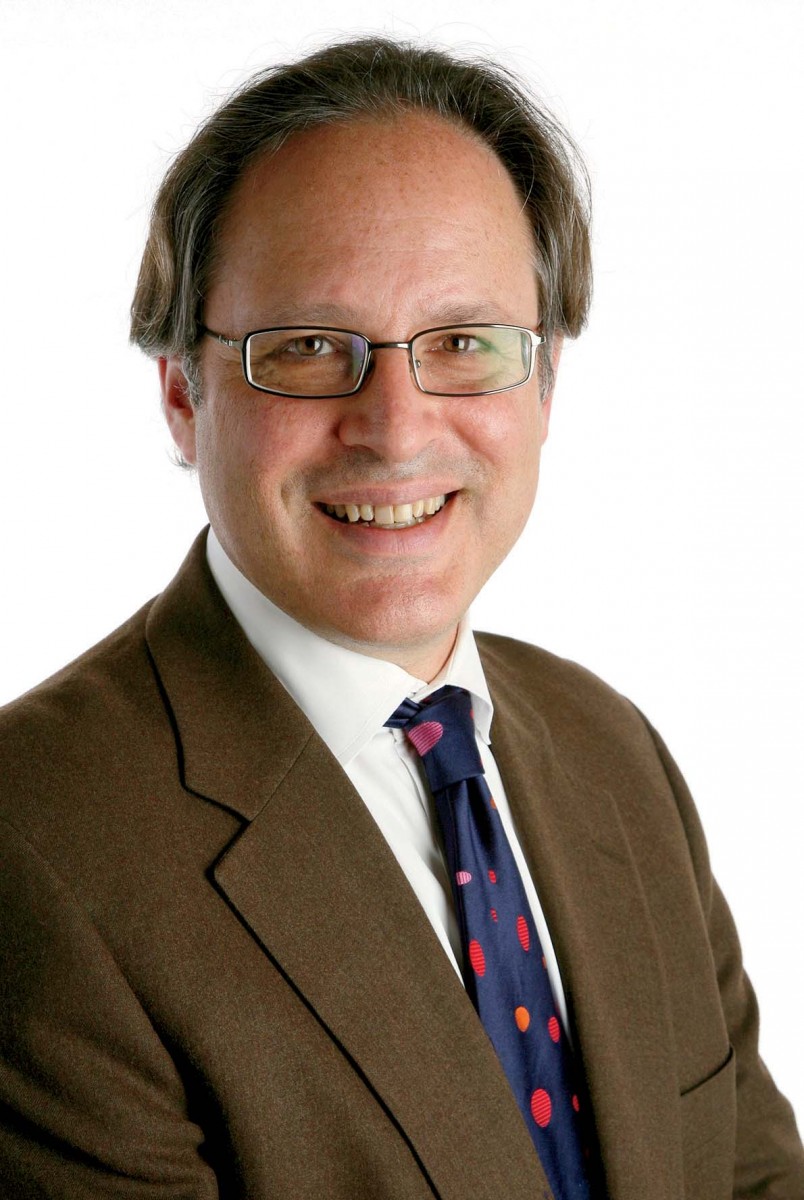
Nicholas Lemann draws on his professional-school deanship to suggest new directions for undergraduate learning.
Photograph courtesy of Nicholas Lemann/Columbia University
More broadly, Lemann observed, as colleges compete for applicants, an institution “offering a wide variety of options from which students can select…has to maintain a large, expensive set of departments and courses.” As those costs collide with rising financial aid, often small (or nil) endowments, and changed student expectations, many liberal-arts schools face existential questions.
“In undergraduate education,” he concluded, “the best way to anticipate change would be to define, state, and put in effect a clear academic mission.” Envisioning “what you stand for academically” and a means to “ensure that every student’s experience encompasses that” led him to contemplate an education in a “set of master skills” (interpretation of meaning, drawing inferences, and so on—“a canon of methods rather than a canon of specific knowledge or of great books”) that in concert would “make one an educated, intellectually empowered, morally aware person.”
Such prescriptions run against the grain in most colleges today. Students admitted to selective schools are considered mature enough to pursue their preferred studies. They may proceed with some guidance (from the structured core curriculums at Columbia and Chicago to Harvard’s increasingly relaxed program in general education: see “The Harvard College Curriculum”)—but most receive relatively little (distribution requirements) or essentially none (as at Amherst and Brown). Research-oriented faculty members teach, in departments and concentrations, about their disciplines and scholarly interests; where general-education courses exist, they are typically created separately. At the most fortunate schools, the resulting smorgasbord offers hundreds or thousands of course choices. In theory, with less structure, everyone finds it easier to navigate the undergraduate years—and to term the result liberal arts.
But this is not necessarily the ideal solution. Beyond the corrosive effects of careerism on student decisions, the significance of a lot of liberal-arts courses may be suspect, even apart from their relevance to employers. And students’ increasingly diverse preparation and backgrounds mean that many may find it daunting to plot a coherent academic program where the choices appear so numerous or the rationale for any particular path so faint. At a time of lagging college completion, such undergraduate uncertainty may become a problem for society (see “America’s Higher-Education Agenda,” September-October 2016, page 64).
Given the long-term value of being broadly educated in a rapidly changing, complex world, it is encouraging that efforts to rethink undergraduate education are under way. Three very different examples expand the range of possibilities: a significantly reconceived liberal-arts college 10,000 miles from the eastern U.S. epicenter of elite higher education; Lemann’s proposed refitting of liberal arts for the twenty-first century; and a venture-capital-funded startup in San Francisco, complete with structured curriculum, technological pedagogy, and an asset-light model that does away with the typical campus accouterments: no classrooms, dining hall, laboratories, or library.
These experiments—two tangible, one theoretical—all proceed outside established institutions (perhaps a separate cause for concern). But that they exist suggests welcome attempts to revise what students should learn in a liberal-arts course of study, and how.
The Residential College, Redefined
Imagine conceiving a college that establishes as its first principle “articulate communication,” defined this way:
Collegiate communities of learning come into being largely through substantive conversation among their members. “Open, informed, and reflective discourse”—an activity of speaking and listening, writing and reading, that is partly its own end, in which participants assume that others will pay attention, and through which they hope to come to know something they did not know beforehand—this is the central and distinctive activity of collegiate education in the liberal arts and sciences. It follows that colleges should emphasize the importance of speaking and writing, and also of the visual and performing arts and other modes of engaging in substantive communication…between individuals who cannot self-segregate into like-minded groups as easily as they can online…, who find a meeting planned for one purpose yielding an unexpected discussion about wholly different matters.…[The] curriculum puts great emphasis on face-to-face encounters and on the practices of articulate communication appropriate for intellectual conversation.
This is not a pipe dream. It underpins a functioning college with a distinctive common curriculum; an international faculty assembled to craft, teach, and renew it; and a purpose-built campus to house 1,000 undergraduates ultimately (more than 800 will be enrolled this fall). The first class educated in the program shaped by “articulate communication” graduated this past May.
The excerpt comes from a 2013 report reflecting the views of the inaugural curriculum committee of Yale-NUS College (Yale’s joint venture with the National University of Singapore), and of the first few dozen faculty members recruited to create this new institution by collaborating in a deliberately nondepartmental way. Its chair was political philosopher Bryan Garsten ’96, Ph.D. ’03, who is professor of political science and humanities and chair of the humanities program at Yale. In conversation, he recalled, that period coincided with the peak of the frenzy over massive open online courses (MOOCs), prompting the committee members and professors to “think through what a college is, and particularly what things could be held in common” among its constituents. The new colleagues, in other words, used the opportunity to devise a college that addresses the questions Lemann subsequently summarized as “what to teach and how to teach it.”
Of course, Yale-NUS’s genesis reflects far more than that 2013 prospectus. It is in fact the latest step in Singapore’s purposeful pursuit of progress in higher education. In a conversation last winter, executive vice president Tan Tai Yong, former dean of the school of arts and social sciences at NUS (the new college’s funding partner), described that arc. First came an emphasis on training professionals—like doctors, lawyers, engineers, and civil servants—on a disciplinary model borrowed from the British. Then, the education system supported more research and development, though still with an eye on the economy. Now, in this millennium, resources have been poured into building student residences—a novelty for the small city-state—and experimenting with general education for students pursuing certain professions. Tan called this last stage a liberal-arts “halfway house.”
An evolving Singapore, said Tan, a South Asian historian, has raised its sights from problems of “engineering” to “problems of social understanding,” encompassing its own complex, diverse population, its ability to navigate among emerging Asian giants with their own interests, and the furious pace of economic and technological change. Given a need to “produce people with different abilities” who can “change disciplines very easily,” the logical next step was a full-fledged liberal-arts college, where students would learn to “deal with diversity and uncertainty.” (Tan himself faces those challenges now: he became Yale-NUS president on July 1.)
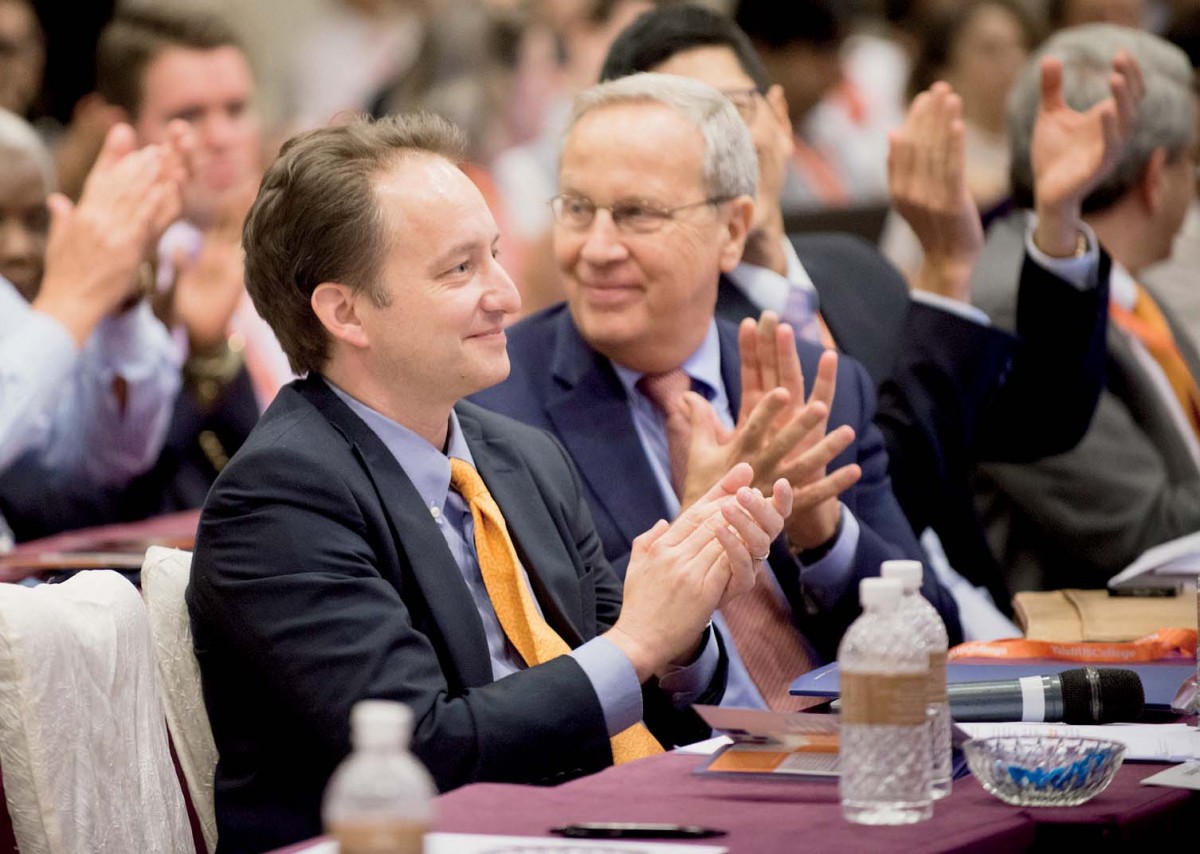
Pericles Lewis (left), founding president of Yale-NUS, and then-Yale president Rick Levin, who partnered with NUS
Photograph courtesy of Yale-NUS
Yale-NUS enjoyed two important advantages as it began to define itself. In a separate interview on the Singapore campus, founding president Pericles Lewis (from 2012 through this past June, when he assumed Yale’s vice presidency for global strategy), highlighted the value of starting from scratch and attracting faculty members interested in both institutional innovation and a strong focus on teaching undergraduates. The prevailing American model for liberal arts, he noted, had devolved to distribution requirements (humanities, social sciences, sciences)—typically liberalized so they became easier for professors to teach and students to fulfill. “So obviously,” he continued, “we took the opposite approach.”
Yale’s Directed Studies—an optional year-long freshman sequence of immersion courses in Western philosophy, literature, and historical and political thought—provided a sort of template that was then broadened significantly. Lewis, previously a Yale professor of English and comparative literature, said Yale-NUS had a global vision beyond merely extending a traditional great-books program into an “Asia and the West” survey. And in considering “what a young person must learn to lead a responsible life in this century,” as he put it, the curriculum had to embrace quantitative reasoning, scientific inquiry, analysis of social institutions, and understanding of modern social thought. The new college set out establish itself as “a model community of learning,” he said: a residential school whose educational program would be shaped by a broad “common curriculum.” In its present form, that comprises 10 courses:
- Literature & Humanities (L&H) 1 and 2 and Philosophy and Political Thought (PPT) 1 and 2 (both freshman semesters);
- Quantitative Reasoning, Comparative Social Inquiry (CSI, both first freshman semester), and Scientific Inquiry 1 (second freshman semester);
- Modern Social Thought and Scientific Inquiry 2 (first sophomore semester); and
- Historical Immersion (any junior or senior semester).
The titles suggest the courses’ broad, non- (or at least inter-) disciplinary nature. During the past academic year, L&H students read The Ramayana, The Odyssey, Herodotus, The Decameron, the Han dynasty historian Sima Qian, Aladdin, The Tempest, Sudanese novelist Tayeb Salih’s Season of Migration to the North, and more. The PPT syllabus—engaged with concepts of the self, the state, individuality, national self-determination, and other issues—spanned sources from classical Chinese philosophers, The Bhagavad Gita, Plato, Aristotle, and Marcus Aurelius to Descartes, Hobbes, Mill, Nietzsche, Gandhi, and Arendt. CSI examines the state, markets and corporations, social movements and social change, class, race, gender, and family: fields of interest to scholars of government, economics, sociology, and anthropology, among others.
The mix of disciplines in these common courses is already distinctive—and other aspects of their design have further, significant implications for students and faculty members.
To begin with, the common-curriculum courses are faculty-owned and -operated—not by a single professor, but genuinely in common. Teams of scholars have hammered out the syllabi and related assignments together. Associate professor of humanities Mira Seo, part of the initial cohort who contributed to the Garsten report, described the exhaustive, iterative process of designing L&H classes that teach students “to see works in dialogue with each other, in a pre-disciplinary way”—not a natural act for experts accustomed to advancing their own fields. A classicist who chose Yale-NUS over a tenured position at the University of Michigan, she recalled the faculty group moving away from a forced march through Homer and The Aeneid—and the specialist’s desire to “master” certain texts—toward a synoptic approach: one that included more and different kinds of texts. They determined that the appropriate goal for liberal-arts undergraduates was “your capacity to master a text,” placing the emphasis on increasing student skills. Such goals impose on professors an obligation to collaborate (all had to be committed to “charitable reading and good listening”) that echoes the college’s aspirations for “articulate communication.” The faculty group read Salih’s book, for instance, and decided they could not teach it effectively—until a new member of the group made the case for it; it was added to the syllabus last year. “This is more work, it’s more maintenance,” Seo said, “but it’s improvable the way a canon is not.”
The common courses are team-taught as well. Rather than divvying up the lectures by discipline, for example, an anthropologist delivered the second Modern Social Thought lecture on Tocqueville. The director of the common curriculum, Terry Nardin, professor of political science at Yale-NUS and NUS, a scholar of modern European political theory, said faculty members everywhere are reluctant to “teach things that are strange,” and admitted finding the learning curve “steep” when preparing to teach about Asian political philosophers. But “This is the very spirit of a liberal-arts college,” he argued, “where people are interested in things outside their field. We ask our students not to prejudge things,” not to track themselves into a professional course too early. “We need to have a faculty that matches the expectations we have of our students.”
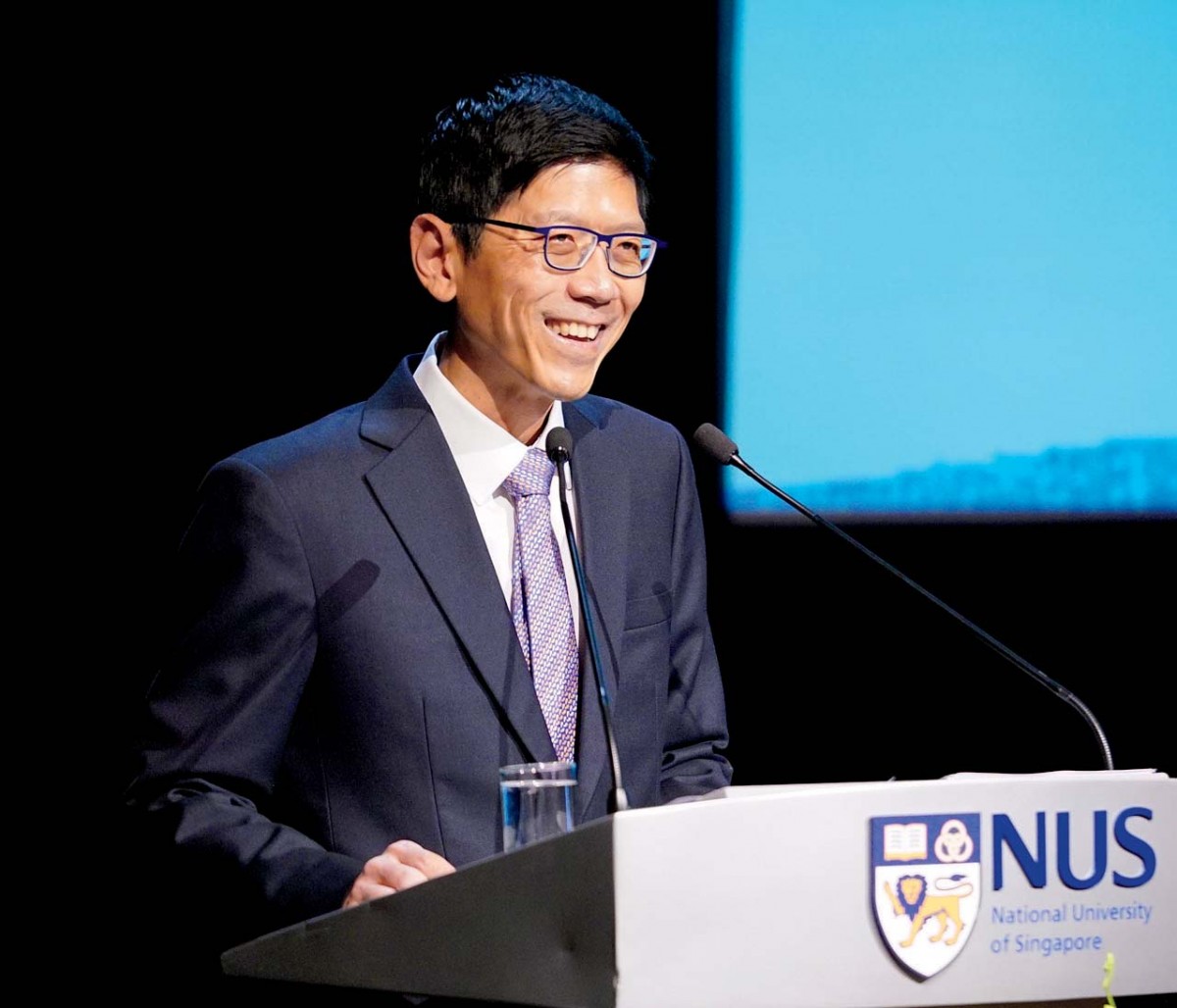
Tan Chorh Chuan, the physician-trekker-artist-administrator who has guided NUS’s educational experimentation and outreach
Photograph courtesy of National University of Singapore
Moreover, the teachers do all the teaching: Yale-NUS doesn’t have graduate students, and does not delegate coursework to teaching fellows. A typical common course has one lecture each week (where the faculty members steel themselves to learn from one another, as Nardin described) and two seminar sessions (where the professors have greater scope to draw upon their disciplines). Each teaching team collaborates on rigorous assessments at the end of each semester, to strengthen courses and as a guide to colleagues who may join future iterations. The faculty’s ownership of the common curriculum has been maintained beyond Yale-NUS’s launch: the inaugural science sequence has already been pared down and recast to focus more on the nature of scientific inquiry and foundational questions, despite students’ differing levels of preparation; and a separate course on contemporary issues has been jettisoned because it overlapped the examples being used in other courses. (This pace of change would astonish at most U.S. colleges.)
Overall, said future president Tan, Yale-NUS’s collectively conceived and taught common curriculum differs significantly from a separate general-education sequence that “no one owns.”
Because all students take the common courses on a coordinated schedule during their first semester and in the subsequent two terms, they encounter new material and learn new skills together, in a way that is additive. To encourage a focus on learning per se, during the first semester, grades are not recorded on transcripts and there are no final exams; evaluations and comments focus on papers, team projects, oral presentations, and students’ reflections on their progress.
Professor Jane M. Jacobs (an aptly named urban-studies scholar), another of the initial faculty cohort and now director of the division of social studies, highlighted this “common experience.” The first-semester social-inquiry content complements the material in philosophy and political thought, she noted. Pericles Lewis underscored the resulting benefits to the hoped-for “community of learning,” as students take their intellectual conversations outside the classroom. In a student body that is internationally far more diverse than those at U.S. colleges, with a variety of prior school experiences and cultural traditions, the first semester more or less assures that “all the students are equally scared out of their minds” as they confront unfamiliar ideas and their own weaknesses, Seo said. They discover that they “all have something to learn—it’s incredibly effective,” and underpins “academic and communal identity.” For all the freedom to choose courses that U.S. students may enjoy, their individual schedules may preclude such community benefits.
The course sequence also reinforces acquisition of skills. Both L&H and PPT have writing assignments that progress from analysis of a close textual reading toward assembling of evidence and making comparative analyses. CSI, separately, requires students to produce a longer research paper. This “structured skill acquisition, integrated across the curriculum,” Nardin said, equips students to write well in multiple disciplines. Introducing quantitative reasoning in the first semester equips students to use data and algorithms in the scientific-inquiry and other courses that follow.
The schedule also incorporates “cocurricular” experiences that extend learning beyond the classroom. During a common “Week 7,” first-semester students engage in field experiences—some in Singapore, some elsewhere in Asia and far beyond—with their professors. These are followed by presentations: an opportunity for speaking and visualization exercises. Similarly, spring-break and two-week, year-end “labs” tied to faculty members’ research provide academic experiences in the wider world. Students’ interests and academic paths are deliberately integrated when they study abroad, too—a nearly universal choice. Trisha Craig, dean of professional and international experience, emphasized that all these opportunities are tied to learning: they are “not drive-bys.” Professor Bryan E. Penprase, another of the initial faculty members, said that, as intended, the design of the common curriculum enabled students to enhance their learning “in their cocurricular activities and their conversations”—a major step toward building a “new academic culture.”
Accommodating 10 term-length common courses has led Yale-NUS to limit concentrations in one way that the faculties at Harvard and other research institutions might reject: across all fields, students’ majors are limited to nine courses and two terms of work on a capstone project (research, a policy analysis, or a work of art or performance). [Corrected June 20, 2017, 8:55 a.m.: Concentrations require a minimum of eight courses plus the capstone project; students are free to take more courses in their field, but not required to do so; in many U.S. colleges and universities without a core curriculum, major fields require 10, 12, or more courses.] “Does a philosophy major need 15 courses?” Pericles Lewis asked. The common courses are “not introductory courses, not preparation for advanced study in any field,” as Nardin put it, so students can take electives that are a bridge into, say, economics or a particular scientific field. But the emphasis remains very much on integrative, liberal-arts education, rather than assuming that most students seek graduate academic training. The concentrations themselves are what Jane Jacobs called “short, fat majors”—14 in all, including such broad fields as arts and humanities, life sciences, and physical sciences.
Penprase, who directs the college’s Center for Teaching and Learning, is an astrophysicist who might be expected to celebrate depth in concentrations. In fact, he is a strong advocate for limiting them this way. Students can certainly pursue a physics or chemistry track, he said, but the broader physical-sciences major is “more vibrant.” After the “lived experience” of the common curriculum, he added, juniors began their concentration courses with “a unique breadth,” preparing them “to be more integrative or interdisciplinary” in their major fields. (Apparently, there is a collateral effect on their teachers: as he put it, “We’re all a faculty of science.”) A former faculty member at Pomona, a school praised for its teaching, Penprase said that Yale-NUS students acquired communication experience and “lateral skills” that outweigh any potential deficit from limiting “deeper disciplinary training earlier.” The result is “a very powerful kind of education and autonomy. They have become more interesting, creative humanists or scientists.”
Do these structures and decisions work? Yale-NUS is pioneering liberal arts in Asia, and the fledgling college has no track record of graduates’ subsequent success. But at least a few of the current students were enthusiastic. Over lunch in one of the residential dining halls (which offer halal food lines), Jason Carranceja, a junior from the Philippines who chose the school over Amherst, said the first-term common courses had made him “better able to appreciate diverse perspectives in other people”—and that they redirected his studies from physical sciences and mathematics to a global-affairs concentration. A grant to study Spanish led to an eye-opening summer abroad in Argentina; he is now exploring east-west and north-south relationships as South America and South Asia interact. And before she came to Singapore, said Ruchika Goel, a sophomore from New Delhi, she had little sense of the differences among Asian nations. Her schooling in India was test-based, and devoid of writing. Now, her suitemates encompass six Asian countries and eight languages; as part of her studies, she conducted her first research project, on gender rights in India, and had a faculty-directed lab experience in Cuba. This summer, she is studying contemporary culture in Korea, after a semester immersion in the language.
Meanwhile, familiar signs of collegiate exuberance were evident. Protest posters about the college’s rules for student-organization meetings were hung (politely, with nonmarking adhesive) on the pristine white walls of the campus. A resident rector (faculty dean, in Harvard parlance) had invited students to a Super Bowl party—beginning at 7:00 a.m. to accommodate the 13-hour time difference. And on a blackboard, seniors had chalked items from their bucket lists, ranging from “Fame and riches” to “Hang out with frenz.” Southeast Asia, meet liberal-arts undergrads.
How will NUS know if this enormous investment pays off? Tan Chorh Chuan, the university’s president, noted that higher education in Singapore “came from a British foundation, with early, narrow specialization,” but now, “We have to think about a future-ready graduate…able to zoom out and zoom in” to identify problems, define options, and build relationships that span cultures and boundaries. To cope in a “multicentric” world, he said, “We need a lot more breadth, with rigor.” (The president, a renal specialist, has managed this feat himself: he has for decades undertaken rigorous treks deep into Asia—and then illustrated accounts of his journeys with his own drawings and paintings in the style of classical Chinese masters.)
Tan credited Singapore’s government for its “long-term thinking and willingness to make long-term partnerships” with institutions like Duke (medical sciences), Johns Hopkins (music and art), and now Yale. In the new college, NUS was “responding to the need for creative thinkers who are familiar with Asian as well as Western perspectives,” ultimately in service to Singapore and throughout Asia. To that end, he pointed to the “more purposeful link between what people learn within the classroom and outside it.” Students who work on a sustainability project in a Cambodian village with their professor, he said, learn about economic development and the environment but also “discover more about themselves and how they relate to other people and situations.”
The effects of the Yale-NUS experiment—a common curriculum with experiential learning, residential education, and the melding of traditions—will become manifest in 10 or 15 years, Tan said. His core criterion seemed to align with the essence of the liberal arts: “Will the graduates be leaders in different sectors in Singapore, Asia, and the world—and will they be able to be influential agents of change in their own spheres?”
A Curricular Prospectus
Where Yale-NUS moves the curriculum toward a common set of courses defined by the substance of the liberal arts (think of Harvard’s former Core Curriculum), with better integrated instruction in writing and other skills, Lemann seeks a curriculum different in kind. He focuses on core courses explicitly designed to create the competencies he thinks students will need as adults. Mastering these skills, he wrote, would yield an understanding of “what it means to be a college graduate, regardless of one’s major, that would be as clear and strong as stipulating what it means to be a professional-school graduate.”
In a conversation, Lemann cited diverse benefits beyond developing foundational skills. For new students who lack the highest level of academic preparation, this sort of structured curriculum would be “an introduction to how to operate in the university.” The core courses, he said, would be “part of a system that would be more efficient at acclimating kids to higher education,” boosting their graduation rate. Recalling his own Harvard education, he cited gaps in statistical and quantitative methods that he had to remedy, for example, before he could formulate a critique of Richard J. Herrnstein and Charles Murray’s 1994 book The Bell Curve. A thoughtful set of courses on how knowledge is created would correct such omissions.
Writing in the Chronicle again nearly a year after his first essay, Lemann fleshed out a case for the liberal arts that would be “stronger, or at least more specific, than calling for ‘critical-thinking skills’ and ‘education for citizenship,’” without succumbing to an education in “employment skills that have a demonstrable payoff.” He outlined a set of first- and second-year courses in:
- information acquisition: the sociology and sources of knowledge in the Internet era;
- cause and effect: defining a question, forming hypotheses, and testing them;
- interpretation: close reading of texts;
- numeracy: engaging with quantitative reasoning, probability, and statistics;
- perspective: how different people experience the world;
- the language of form: seeing, using, and producing visual information;
- thinking in time: historical perspective and a sense of contingency; and
- argument: written and spoken presentation
Although a course on cause and effect would necessarily involve the scientific method, for instance, and one on thinking in time would engage with historical content, Lemann made clear that he means something distinct from science or history classes, per se. For instance, “cause and effect”
is something like a course in the basics of the scientific method, aimed at people who aren’t necessarily going into science. The core thinking process entails stating what question you’re trying to answer, then establishing a hypothesis…, then finding a way to test the hypothesis by gathering material that would settle its degree of trustworthiness. The title of the course refers to the idea that causation is a key concept in almost all fields of inquiry…. [F]or years I have been teaching a version of it to journalists, using news stories as the main material. What might explain, for example, why violent crime has decreased so much more in New York City than in Chicago? What’s important is conveying the idea that making inferences is a skill, and that a series of thinking techniques is powerfully helpful in performing it.
Similarly, “thinking in time” means “to do more than teach people to do historical research per se. To most students arriving at college, the past often seems safer than it actually was, outcomes more inevitable than they were, and operative assumptions closer to the ones we use today.” Historical perspective “can make students see that everything could have turned out differently, that individual people always operate within social, economic, and cultural contexts.”
Lemann has aimed to prompt discussion about a “suite of intellectual skills that together would empower a student to be able to acquire and understand information across a wide range of fields, and over the long term,” as she sought “a more successful education and also a more successful career and life.” In other words, a refreshed program in liberal arts.
And has the academy embraced his proposal, or at least reacted? Not in any organized way—not at all to his surprise, he responded. There is no organized constituency for such change among professors and students (and no direct voice for those outside the academy). Presidents focus on who is in the student body—and not “what the university is teaching.”
Having shed his own administrative duties, Lemann wrote as a faculty member, with the freedom that confers to say what is on his mind unburdened by the necessity of implementation. He did so knowing the many reasons “why core-curriculum discussions are difficult and unpopular, and why methods are not an explicit or primary focus of undergraduate education. But the result is that the balance has shifted too far away” from the kind of teaching and learning he has sketched. A conversation that began to shift that balance back, he wrote, “would make liberal education stronger and more sustainable.”
And Now for Something Different
From the Silicon Valley perspective, Yale-NUS is yet another expensive venture, replete with overhead and catering to elite students, and Nicholas Lemann’s curriculum retrofit a mere face-lift for commodity colleges—both ripe for disruption. The clearest attempt to effect that disruption is Minerva Schools at KGI, the undergraduate operation of the venture-funded Minerva Project, founded by Ben Nelson, a graduate of the University of Pennsylvania’s Wharton School and former CEO of Snapfish, the photo-hosting service. The school has enrolled students since the fall of 2014, immersing them in a reconceived kind of college significantly shaped by Stephen M. Kosslyn: its founding dean, now its dean of arts and sciences, and for three prior decades professor of psychology, department chair, and dean of social sciences at Harvard.
Much has been written about Minerva’s distinctive structure and teaching. In pursuit of radically lower costs, the school has essentially done away with all the fixed assets of a campus. Students live in leased units with kitchens in San Francisco their first year, and then sequentially, in subsequent semesters, in six other cities around the world (thus far, Berlin and Buenos Aires, with Seoul on tap), where they literally study abroad together. They attend “class” by laptop, in a sense inverting the HarvardX MOOC model: instead of aggregating faculty members in Cambridge and Boston and disseminating their work around the world, Minerva aggregates its students and connects them online to dispersed teachers.
When they log on for class sessions via the Active Learning Forum, Minerva’s software platform, teachers (who work on a contract basis) and students can all see each other, since all instruction is in seminar format. The lesson plans used by each faculty member build in myriad engagement and reinforcement tools derived from research on learning (electronically arranged small breakout groups to brainstorm a problem and report on options, polling and voting to solicit feedback, collaborative whiteboards). By observing each student through the platform, the instructor can make certain each is remaining continuously involved, and tallies each one’s participation in discussions.
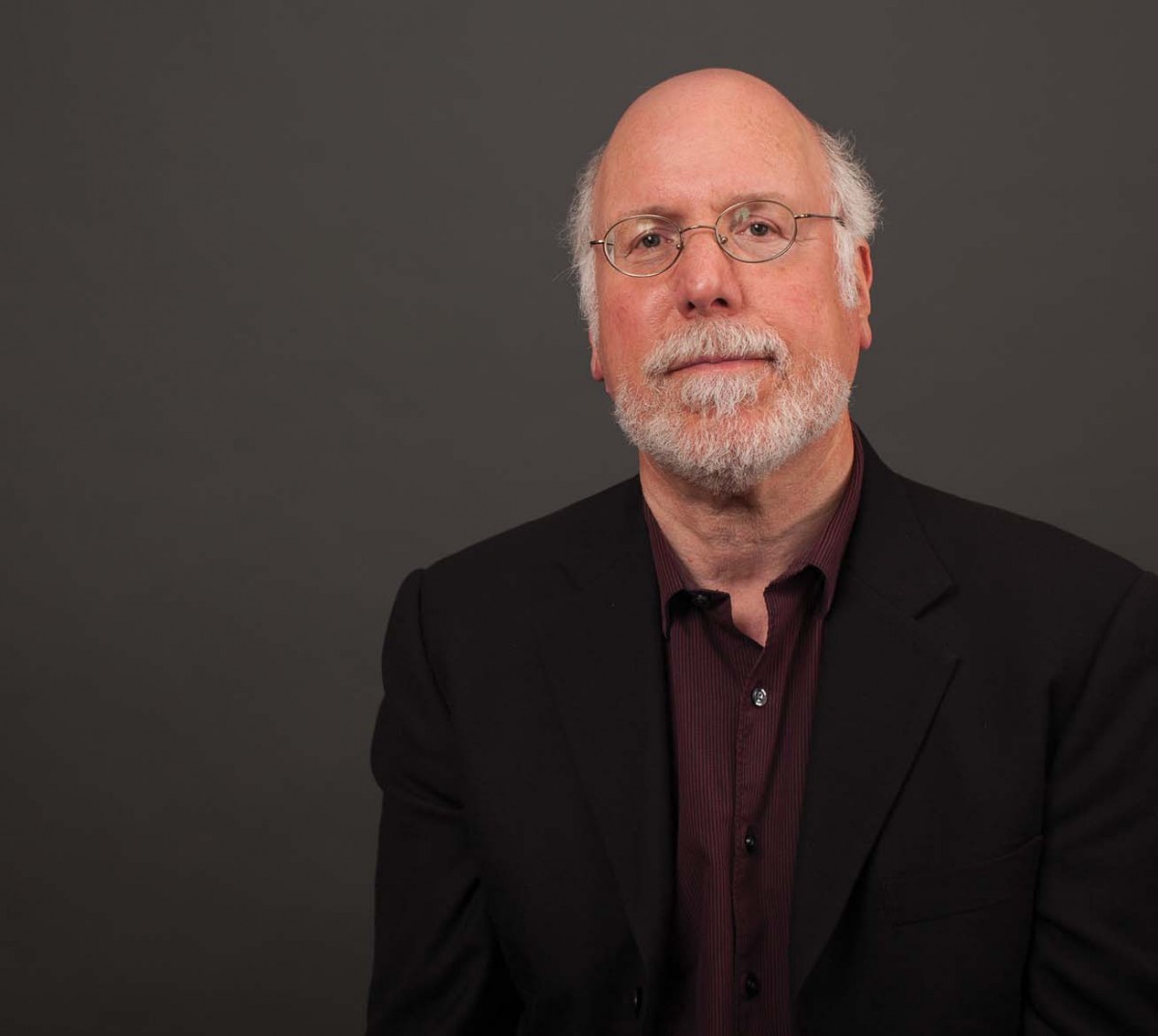
Stephen M. Kosslyn, Minerva’s founding dean and dean of arts and sciences, has driven a radical redesign of liberal arts and pedagogy.
Photograph courtesy of the Minerva Project
The software minutely details every learning objective and activity built into the lesson plan for each class session. Faculty members go through a four-week Minerva boot camp to master the pedagogy before teaching students. The aim is an intensified version of the active learning achieved in other institutions’ “flipped classrooms,” which assume prior familiarity with readings and recorded lectures so students’ time with their instructors focuses on problem-solving and learning concepts by applying them. Harvard Business School students might see a Minerva class as an online equivalent of their own carefully structured case discussions, on steroids. The similarity is no accident: Kosslyn mastered the approach during three years as co-leader of the Mind of the Market lab with Gerald Zaltman, now Wilson professor of business administration emeritus. (Nelson, Kosslyn, and colleagues detail the Minerva system in a book forthcoming from MIT Press late this year.)
Such practices may become more widespread as educators examine Minerva’s methods. It may be a greater stretch to imagine other institutions embracing the radically revised, pared-down course of study in which Minerva deploys its pedagogy. If the substance of Yale-NUS’s common curriculum is a recognizable version of liberal arts, and Lemann’s “canon of skills” and methods would be taught using the substance of the liberal arts, Minerva at the very least inverts the telescope. Its curriculum, perhaps its most significant innovation, aims at what it calls “practical knowledge”: tools that equip students to solve real-world problems. Thus, rather than offer a course in, say, the history of art or music, Minerva views art and music as interpretative tools students can expect to use or encounter in communicating throughout their lives.
From the outset, Nelson promoted a vision of a highly structured general-education curriculum. As Kosslyn recalled from early discussions in late 2012, Minerva sought explicitly to prepare graduates to develop their capacity for leadership, innovation, adaptability, and global perspective; he plunged into the academic literature, looking for agreed-upon “characteristics of successful leaders,” innovators, and creative people, and testing his findings with employers. The process, Kosslyn said, was “very top-down.” His inquiries identified three core competencies that underlay the outcomes Minerva’s education aimed to prompt: two cognitive skills—creative thinking and critical thinking; and an interpersonal skill—effective communication. After a consultation with Harvard’s Balkaniski professor of physics and applied physics Eric Mazur (a pioneering educator, profiled in “Twilight of the Lecture,” March-April 2012, page 23), the latter competency was divided, creating a fourth category: effective interaction.
Immersion in acquiring those competencies, rather than conventional course content and information, became the subject of students’ first year, when they take four “cornerstone” courses:
- Formal Analyses (thinking critically with logic, statistics, algorithms, computation, and formal systems);
- Empirical Analyses (thinking creatively by framing problems, developing and testing hypotheses, and recognizing biases, as in science and social science);
- Multimodal Communications (speaking, writing, debate, design, and visual and artistic expression); and
- Complex Systems (human interactions, collaborations, networks, negotiations, and leadership).
“It all looks very coherent,” Kosslyn said, “and it is.” During the year, the students are introduced to about 10 dozen habits of mind and foundational concepts (HCs, in Minerva’s shorthand, each with its own hashtag) that the curriculum designers have determined are embedded in the overarching competencies: fitting communications to the context and audience, for an example of the former, and distinguishing correlation from causation, for the latter. The skills are engaged not through traditional subjects (literature, history, biology, and so on), but by addressing big problems: feeding the world, climate change, securing water supply, or maintaining peace.
In the second year, students begin to apply these concepts to their fields of interest, choosing among five majors (arts and humanities, computational sciences, natural sciences, social sciences, or business)—each with three “core” course prerequisites—plus diverse electives. To date, for Minerva’s pilot students and two subsequent cohorts—numbering about 300 in all from 2014 through this year—those electives have consisted of the core courses from the other majors.
Concentrations within the five majors are to follow in the third year: a prescribed grid of six tracks, typically, each in turn requiring three defined subject courses, designed to span theory, empirical findings, and applications. Those concentration courses are now under development as Minerva pedagogical experts team with faculty subject-matter experts to define the content, syllabus, and learning plan for each—all under decanal supervision. When all are created, Minerva’s catalog will number perhaps six dozen structured courses in total; in their third and fourth years, students also take electives from the other majors, and pursue increasingly independent work on capstone research projects and in Oxbridge-style tutorials.
For arts and humanities, for instance, the core courses are Global History, Morality and Justice, and The Arts and Social Change. For their subsequent concentrations, those students will choose among humanities analyses; humanities foundations; humanities applications; historical forces; philosophy, ethics, and the law; and arts and literature. Among the nine courses available, a “humanities applications” concentrator would enroll in Uses and Misuses of History, Creating Ethical Political and Social Systems, and Using the Arts and Literature to Communicate and Persuade. Underscoring Minerva’s emphasis on practical liberal arts, illustrative career options accompany the description of each concentration: for a humanities-applications concentrator, these include communications specialist, political scientist, public-policy expert, film maker, urban planner, and attorney.
To liberal-arts traditionalists, Minerva’s rubrics may seem formulaic or rigid. Having course designers and curriculum specialists figure so prominently in course development departs significantly from the convention of relying on the individual professor’s knowledge—and from the teamwork embedded in Yale-NUS’s common curriculum or any likely implementation of Lemann’s ideas. It is a good bet that many of the American students who enroll in the top tier of selective liberal-arts colleges now might chafe at Minerva’s holistic application of learning science.
But that is for the market to decide—and its business plan aims much more at students, many of them international, who do not now have ready access to liberal arts, and who are, overwhelmingly, not enrolled in the major liberal-arts programs that have evolved to date. However its vision unfolds, Minerva has usefully pushed the limits on content and the application of cognitive science to test an alternate version of liberal arts, and put it before students who are willing, like their peers in Singapore, to try something very different.
• • •
Yale-NUS, uniquely supported by two powerful universities and backed with unprecedented resources, may be emulated in its entirety by a few of the emerging Asian nations with the funds to invest in liberal arts. Its curriculum may have a broader demonstration effect on established U.S. colleges seeking to bolster general education within familiar disciplinary buckets—or, at a minimum, to extend their definition of the literary canon beyond the usual European and North American icons. Lemann’s skills-based curriculum may find a readier audience, if not among the most prestigious elite institutions. Some elements of Minerva’s technologically driven, lower-cost model will have a financial appeal to hard-pressed colleges, public and private, and its edgier substantive version of the liberal arts is designed to have an appeal that builds bridges to career options after college. But whatever their particular paths toward wider influence, each represents a serious effort to challenge prevailing assumptions—perhaps while reminding educators and their future students of the enduring power and potential of an education in the liberal arts.
